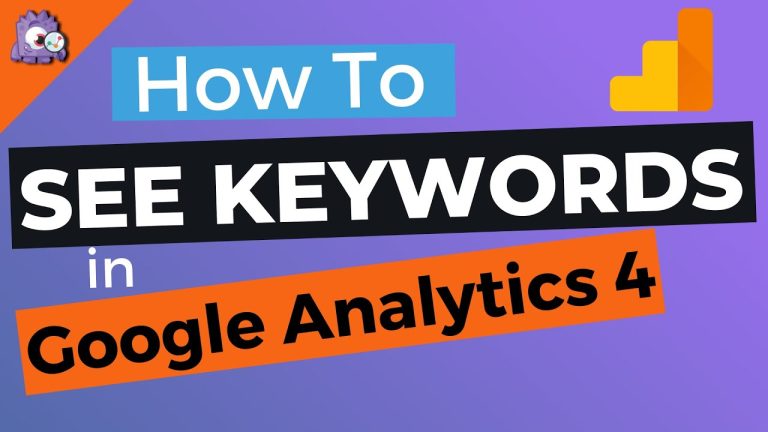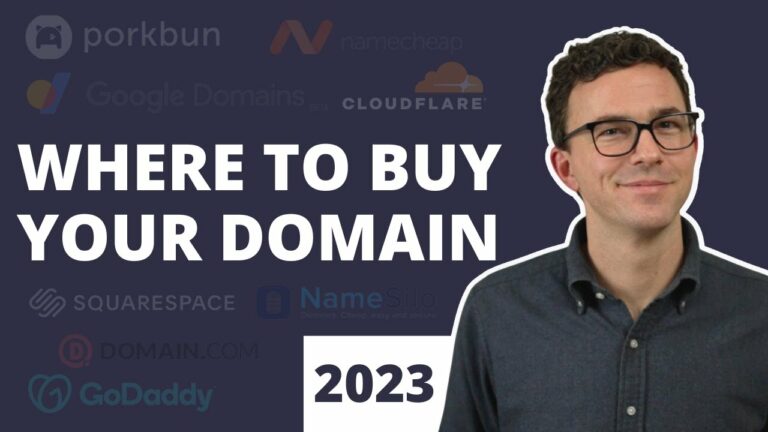Many business owners hear the term “search engine optimization” (or SEO) from their friends or competitors. They may view it as a way to increase sales. What is SEO? A business owner might have tried SEO services in the past but it didn’t work out as expected. Since before SEO was invented, I have worked in search engine optimization and ranking websites. These are the SEO changes since 2000 and the things you need to look for in SEO services your SEO Agency provides. We look back on SEO over the years, and we explain what SEO is today as well as how to best use it for your website.
SEO in 2000
At the beginning of the Millennium, the most popular search engines were Excite and Lycos. However, only a small proportion of the UK population had internet access back then and the dial-up system was slow for those who did have internet access. Websites had one to two pages that contained basic information. This allowed them to load quickly (within 20 seconds). The best SEO practices were to “hide” as many keywords as possible on a page to ensure that the website is found for those search terms without making it look spammy to visitors.
Google introduced AdWords in 2002. It was widely regarded as the end of SEO. People could now pay for prominence on the website that is the most popular for internet searches. Yahoo bought Inktomi and AltaVista in 2003. This was the end of smaller search engines. Google began to crack down on spamming websites and practices. Google realized that AdWords were not going to kill SEO and that the ‘natural listing’ encourages visitors to return to their search engine platform. Google began to recognize ‘professional SEO experts’ and encouraged good SEO over spamming.
The first website to be ‘banned from the internet’ was in 2004 when Google took action against spamming websites. They also brought legal action against the responsible “SEO Company”. You only needed links to rank websites in 2006. In 2006, buying links or link exchange was the norm. Most websites had a page that listed companies and links to their websites. I am still amazed at how many websites keep this tradition going.
Google was now the only “player” in search engine marketing. In 2004, Google began to take action against bad linking practices and companies. They also started tightening their control over spam and buying links. All “naughty SEO practices” were effectively eliminated during the “Noughties”, as Google focused on ranking websites based on their content and relevance to the search being performed.
SEO in 2010
We noticed that search engines started to notice social media sites between 2010 and 2015. Soon, the results were filled by Twitter’s tweets. I can still see the face and business of one of my customers by searching Google for him. The entire first page of search results was compiled from tweets that two staff members had been discussing how awful the company was.
With the Google ‘Caffeine” update, videos and images were also added to search results.
Google introduced “personal search result” which displays websites that are based on previous searches and sites you have visited. The SEO world was a bit shocked when customers claimed that their websites were “top of Google” for any industry-related search. This was because they had visited their website multiple times before and Google gave them the website for all the relevant searches. This issue can still be problematic until they are shown the new Google Incognito search.
Ranking websites was about being found for big keywords. The goal was to rank for the search “Plumber” in Bristol. Google’s ‘Panda’ and ‘Penguin’ updates figuratively killed off “link exchanges” with severe penalties for websites that had no relevant links to them. Google also introduced “nofollow links” which allowed websites to provide links and information that are relevant to other websites without any penalties. This was the beginning of safe linking. Ranking in search engines was now determined by the quality and relevance of the content.
The ‘Office For National Statistics’ in 2014 released this report:
- 36.2 million people (76%) in Great Britain used the Internet daily, 21 million more than what was available in 2006.
- Between 2010 and 2014, access to the Internet via a mobile phone increased more than twice from 24% to 58%.
- 74% of adults purchased goods and services online in 2014, compared to 53% in 2008. Clothes (49%%) was the most popular item purchased online in 2014.
- 67% of adults in Great Britain are aware of Internet storage space, but 35% of them use these services to store their data.
- In 2014, 22 million homes (84%) in Great Britain had Internet access, up from 57% in 2006.
- 91% of households used fixed broadband Internet connections.
The UK was almost internet-savvy, and the UK used mobile phones to visit sites.
SEO 2015 and Beyond
In 2015, the biggest change in search engines was the “penalization” of sites that weren’t “mobile-friendly”. A mobile-friendly website provides different information to make it easier to read and understand on a smaller screen. Google began ranking responsive or mobile-friendly websites higher in search engine rankings to ensure users had the best possible experience. This means that the website automatically adjusts its size and format to suit the screen.
The UK’s population was using their phones to search for local information. Local companies can now have an edge over large corporations and ‘national’ companies online. Google’s introduction of semantic search, which allows Google to bring back websites not based on keywords but on the content of a page, changed the way SEO agencies approach websites. As internet users become more knowledgeable about their searches, ranking for ‘Big’ keywords like ‘Plumber Bristol, became less important. Website visitors increased with ‘long tail keywords’ and they also helped to increase conversions.
What is the SEO Process Today?
It is likely to be true that search engine optimization processes and practices have outsold the term “SEO” In years past, the content and structure were enough to make a website work. There is much more that can be done to rank websites in search engines and to engage customers. Digital marketing is a better term for the service. As mentioned, the ranking was based on old practices. The business would be ranked if it focused on one keyword per page, or for the entire website. Back then, it was all about rankings.
SEO: An old way
There are many factors that you need to take into consideration when it comes to SEO. SEO is about conversion.
Semantic search refers to when Google returns information about the page and not the description that the website creator entered back to the searcher. This is illustrated by the example of “Plumber Bristol”. You would have focused on ranking the company for “Plumber Bristol”, Plumber in Bristol, and possibly “Emergency Plumber Bristol” years ago. However, this is no longer true for businesses that offer a solution to ‘distress purchase’. Better practice for websites is to include advice and guidance along with long tail keywords (3 or 4-word searches), such as “Emergency plumber in Bristol with free callout” or “Reviews of an Emergency Plumber near you”.
Google wants users to have the best experience possible and quickly find relevant information. Semantic search does this. This is also a smart move for business owners. Do you prefer your website to be found by a user searching for “Plumber in Bristol”, where they might be looking for information, a job, a service they don’t offer, or a targeted search like “Best Emergency Plumber near BS7”? You will be found for the “best-emergency plumber near BS7” and you will get a visitor to your website. This is the biggest change Google has made in terms of keywords and it will continue to be so. SEO, or digital marketing, is not about ranking high in search engines but rather how many search terms you can find and convert to paying customers.
Website Content
Google recommended to professional SEO Agencies, only 2 or 3, that 300 words per page be sufficient content years back. They stated last year that the MINIMUM should not exceed 500 words. Each day, I get asked by potential customers to review their websites. Most pages have 150-250 words. This is a common practice. This can be viewed in two ways. Google must adjust its expectations because most websites don’t meet their standards. Or, you can look at it as an easy way for Google to get ahead of the competition by simply adding content. Are you sure that
Google will not lower its expectations, or expect websites to meet their standards. Google released the “mobile-friendly” update in recognition that around 80% of websites needed to be updated – but they did it anyway because it was beneficial for over half of their users. The quality of content they produce affects 100% of their users. Our customers should expect to see around 800 words per page. This content is sufficient to make the site ‘ semantic’ search-friendly, provide relevant content, and not be wordy.
It is a good practice to:
- Page Title – Describe the page’s purpose (big keyword if necessary).
- Headline – asking a question
- The first paragraph briefly explains the solution/content.
- Image/Video
- Description of the solution in greater detail
As an example, take our Emergency Plumber in Bristol
- Page Title: Emergency Plumber Bristol
- Headline: Are You Looking for the Best Emergency Plumber Near Bristol?
- First Paragraph: Smith Plumbing offers a 24-hour emergency plumbing service in Bristol. We don’t charge a call-out fee and can be there in just 20 minutes. We are the top emergency plumber in your area, according to customer reviews. Call us now…
- The professional image of the Van or Plumber
- Description: The common problems they solve, the things they can fix, and some quotes from customers.
There are many benefits to this.
First, people who are looking for a plumber will read the first paragraph. Next, they will see the van image (build authority and professionalism), and then call the Plumber. Others will need more information, which they can find further down. This is SEO cheating. It is not. Google will be grateful that you provide relevant information to users. The “new” SEO is how content is organized and written on pages.
Your website will be found for more than just the words it contains – semantic search. Customers and potential customers could search for the Plumber’s name using the above example. Would you prefer to be found for one keyword, or several relevant customer-converting keywords, if you were a Plumber? Google agrees with me. The old practice was to create content for search engines. You must now create content that provides value to customers. This is a much easier task than you might imagine. What were your last five customer inquiries? What was their problem? Write about the problem and your solutions.
Link Building
In the past, link building was done by obtaining as many links as possible from as many places. We were contacted by a large company about their SEO. They were shocked when we suggested that the 1.4 MILLION links to their website be removed. The company had spent a lot of money over the years on the links. Google will see the irrelevance of your website if you have too many irrelevant links. A few relevant links are better than a million links to your site. Engaging in relationships is the best way to build links. Let’s take our plumber as an example. A link from the Gas Safe Register, a local bathroom showroom or plumbing center, and a few other local websites would suffice.
Social Media
Although we still see companies like these, I remember years ago when I suggested that businesses be on Facebook. My usual response was “Facebook is only for teenagers.” This is not our market. Facebook can bring more customers and traffic to your doors than your website if done right. The 25-34-year-olds are Facebook’s biggest user group, while the 35-44-year-olds are second. Facebook is used more by the 45-54-year-olds than teens, almost as much as the 18-24-year-olds.
Statista: Facebook users in the UK age
Facebook is a great way for businesses to create a brand and engage customers. A review on Facebook, unlike reviews on your website that potential customers may see, is immediately visible to all friends. If a friend “likes” the comment, all their friends are able to see it. Our customers are receiving more leads via Facebook. People ask their friends for recommendations on businesses and get dozens of responses. If you’re on Facebook, you’re more likely to receive a link to your contact information.
What’s next for “Social Media”? Live streaming! Twitter purchased Periscope, a company that allows you to live stream from your phone. “So what?” asks our emergency plumber. I could live my work while I fixed a problem if I was a plumber. The video would go out to my entire social media network, which is free to air around the world. If your company holds a “brainstorming” session, periscope it. Your customer will give you the solutions.
Video Marketing
YouTube has no old SEO techniques for video. YouTube was originally created to show funny videos about cats. This has all changed today. YouTube, which is owned by Google, is the second-largest search engine in the globe. YouTube is used by over 1 BILLION people worldwide. Every minute, 300 hours worth of videos are uploaded to YouTube. To view all the videos uploaded within the hour, it would take approximately 2 years.
To view all of the videos that have been uploaded today, would take you the rest of your life. According to Google statistics, 73% of all searches made through a search engine in 2018 will lead to a person viewing a video. Another way to think about it is that if 10 people search for your product or services online, 7 will view a video and 2 will visit a site. As part of our digital marketing service, I make videos for customers.








